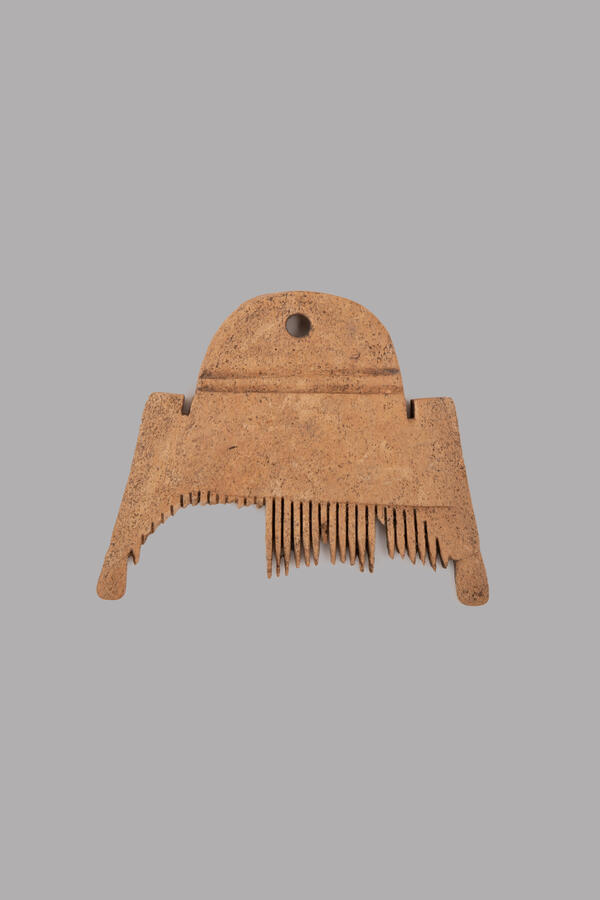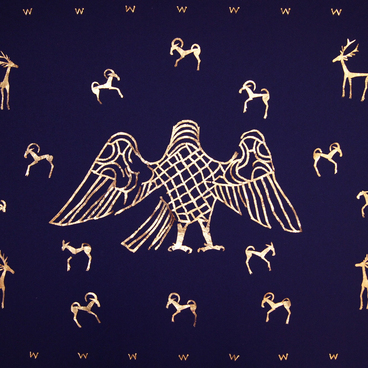In the area of the village of Zamyatino, Zadonsky district, Lipetsk region, a human settlement existed as early as the 5th century. Among the inhabitants of the village, there was a comb-maker. Such things required great professionalism in manufacturing and were quite expensive. The discarded antlers of the elk, which were harvested in autumn, were usually used as the material for creating combs.
The combs were made from the blade of the antlers, and the protrusions were cut or sawed off. After that, the horns were placed in water for a long time and treated with steam. In order to obtain flat blanks, the artisan carefully ground, planed and polished them. Then, using a thin saw and a sharp blade, he sawed out the back of the comb and its teeth.
The combs were processed with metal saws of various sizes — from very coarse to the finest ones. The width of some cuts did not exceed 1 mm, therefore, the thickness of the saw blade was even less. To make a comb, a primitive bow lathe was sometimes used. It was set in motion by the craftsman’s assistant, who drilled holes at the base of the back.
The comb touched the hair — the source of human life force. In Slavic-Russian mythology, this item was considered a kind of talisman, and people believed that it drove out evil spirits. Another name for a comb was a “konek” (horse). The horse symbolized purification and the struggle against evil spirits.
Combs could act as a symbol of fertility and irrigation. Its shape symbolized masculinity, and the teeth imitated rain. Later in Russian villages, married women had to cover their heads even at home. The tradition allowed to wear loose hair only on tragic occasions such as the death of a relative.
Hair was considered a concentration of power and it was forbidden to show it. To open it to the world with evil forces meant to bring disaster upon oneself. Combs, similar to the items from the museum’s collection, were used in the territory from the Scandinavian Peninsula to the Northern Black Sea region. This is one of many finds that shows the movement of Germanic tribes from the northwest to the southeast. Apparently, the comb makers, whose workshops were discovered near Zamyatino, come from the west and belong to the Germanic language group.
The combs were made from the blade of the antlers, and the protrusions were cut or sawed off. After that, the horns were placed in water for a long time and treated with steam. In order to obtain flat blanks, the artisan carefully ground, planed and polished them. Then, using a thin saw and a sharp blade, he sawed out the back of the comb and its teeth.
The combs were processed with metal saws of various sizes — from very coarse to the finest ones. The width of some cuts did not exceed 1 mm, therefore, the thickness of the saw blade was even less. To make a comb, a primitive bow lathe was sometimes used. It was set in motion by the craftsman’s assistant, who drilled holes at the base of the back.
The comb touched the hair — the source of human life force. In Slavic-Russian mythology, this item was considered a kind of talisman, and people believed that it drove out evil spirits. Another name for a comb was a “konek” (horse). The horse symbolized purification and the struggle against evil spirits.
Combs could act as a symbol of fertility and irrigation. Its shape symbolized masculinity, and the teeth imitated rain. Later in Russian villages, married women had to cover their heads even at home. The tradition allowed to wear loose hair only on tragic occasions such as the death of a relative.
Hair was considered a concentration of power and it was forbidden to show it. To open it to the world with evil forces meant to bring disaster upon oneself. Combs, similar to the items from the museum’s collection, were used in the territory from the Scandinavian Peninsula to the Northern Black Sea region. This is one of many finds that shows the movement of Germanic tribes from the northwest to the southeast. Apparently, the comb makers, whose workshops were discovered near Zamyatino, come from the west and belong to the Germanic language group.






